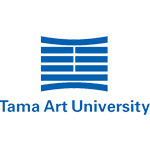PACIFIC RIM: Eco Research Lab Costa Rica
- Social Entrepreneurship
- Sustainable Development

Fall 2017
As part of ArtCenter’s ongoing Pacific Rim project in partnership with Tama Art University, Toyko, ArtCenter students collaborated with Tama students and faculty for two weeks to study, explore and be inspired by the rich biodiversity of the Costa Rica ecological landscape to later design sustainable spaces, materials innovations, furnishings and experiences. This immersive experience challenged students to draw upon the influences of biomimicry and nature’s biological forms for concepts that reflected symbiotic relationships with natural resources.
This project was made possible in part by support from the Designmatters Educational Program Grant from the Autodesk Foundation as well as a grant from the Sillicon Valley Community Foundation.
Project brief
ArtCenter and Tama students were immersed for two weeks in the rich ecological biodiversity of the Costa Rica, learning natural biological forms and symbiotic relationships between living organisms. Inspired by the natural world, international student teams used biomimicry to design sustainable spaces, material innovations, furnishing and experiences to forge new connections to nature and paradigms of how humans live, work and play.
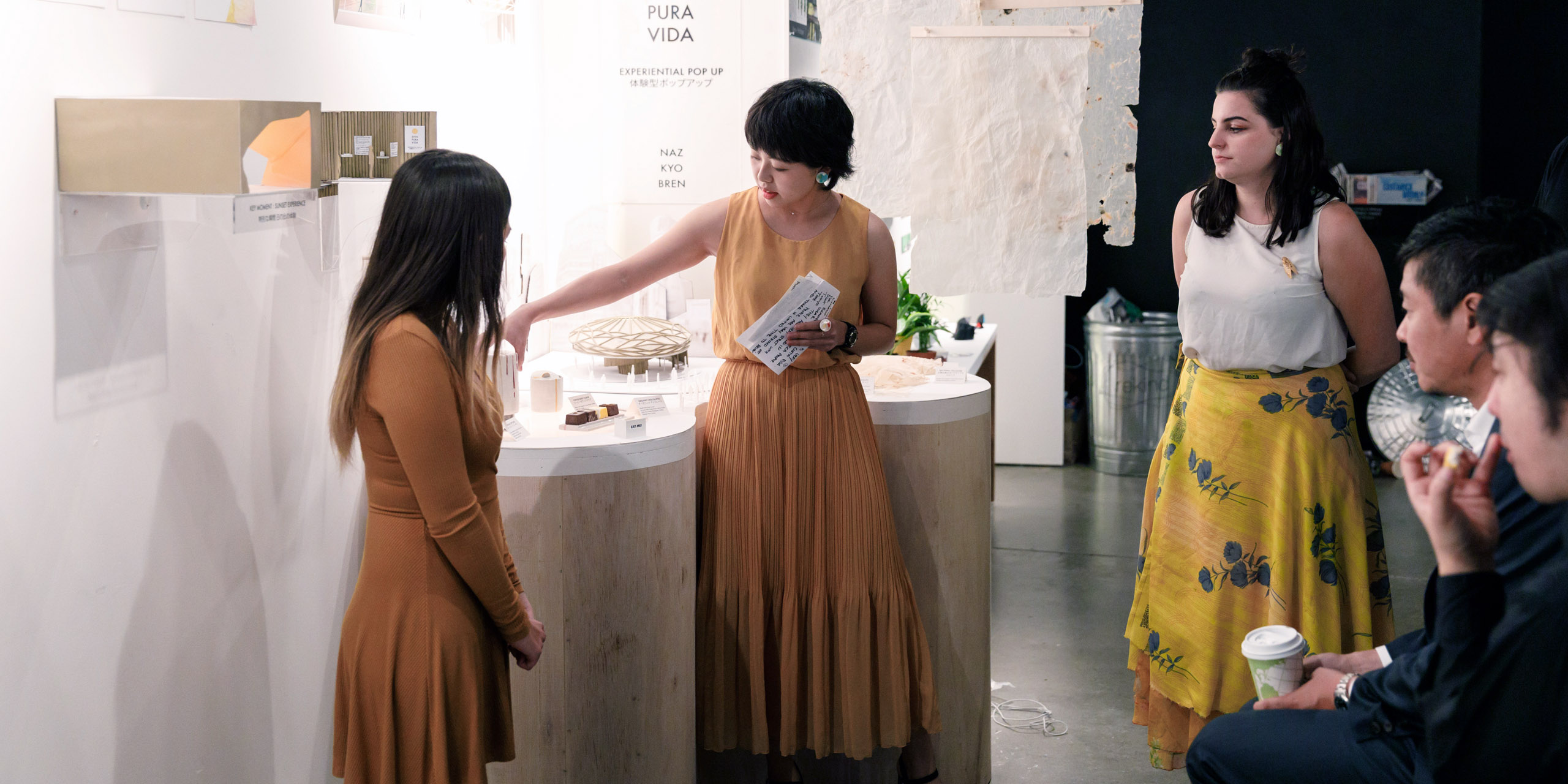
“To be in that kind of environment was extremely challenging for the students individually. The students should feel very proud that there were able to navigate and be inspired by nature and share those authentic kinds of experiences by designing a project that has them rethinking their relationship with nature.”
– James Meraz, Professor, Environmental Design
About Pacific Rim
Established in 2005, the Pacific Rim international collaboration joins students and faculty from ArtCenter and Tama Art University in Tokyo to create trans-continental experiences for students on a wide range of projects of global concern from aging population to sustainable illumination. Each Pacific Rim project has an extensive two-week research trip which exposes students from both schools to environmental, historical and contemporary challenges of a specific location while encouraging student collaboration, team ideation and new opportunities for design and outcomes.
About Costa Rica
A country about the size of West Virginia, Costa Rica is home to more than 500 unique plant and wildlife species, representing nearly 4 percent of the total species worldwide. It’s one of 20 countries with the highest biodiversity in the world. Costa Rica’s humid jungles are rich in native wildlife including spider monkeys, blue morpho butterflies, giant sloths, dramatically-colored helicona plants, eccentric walking palm trees and more.
Costa Rica declared its sovereignty in 1847, and over the years, established itself as one of the most stable, prosperous and progressive nations in Latin America known for its liberal environmental policies and booming ecotourism. Costa Rica has an extensive national parks and protected wilderness areas. The country’s commitment to the planet-positive tourism industry weaves together sustainable methods and local community involvement with a strong emphasis on maintaining a biologically sensitive footprint.
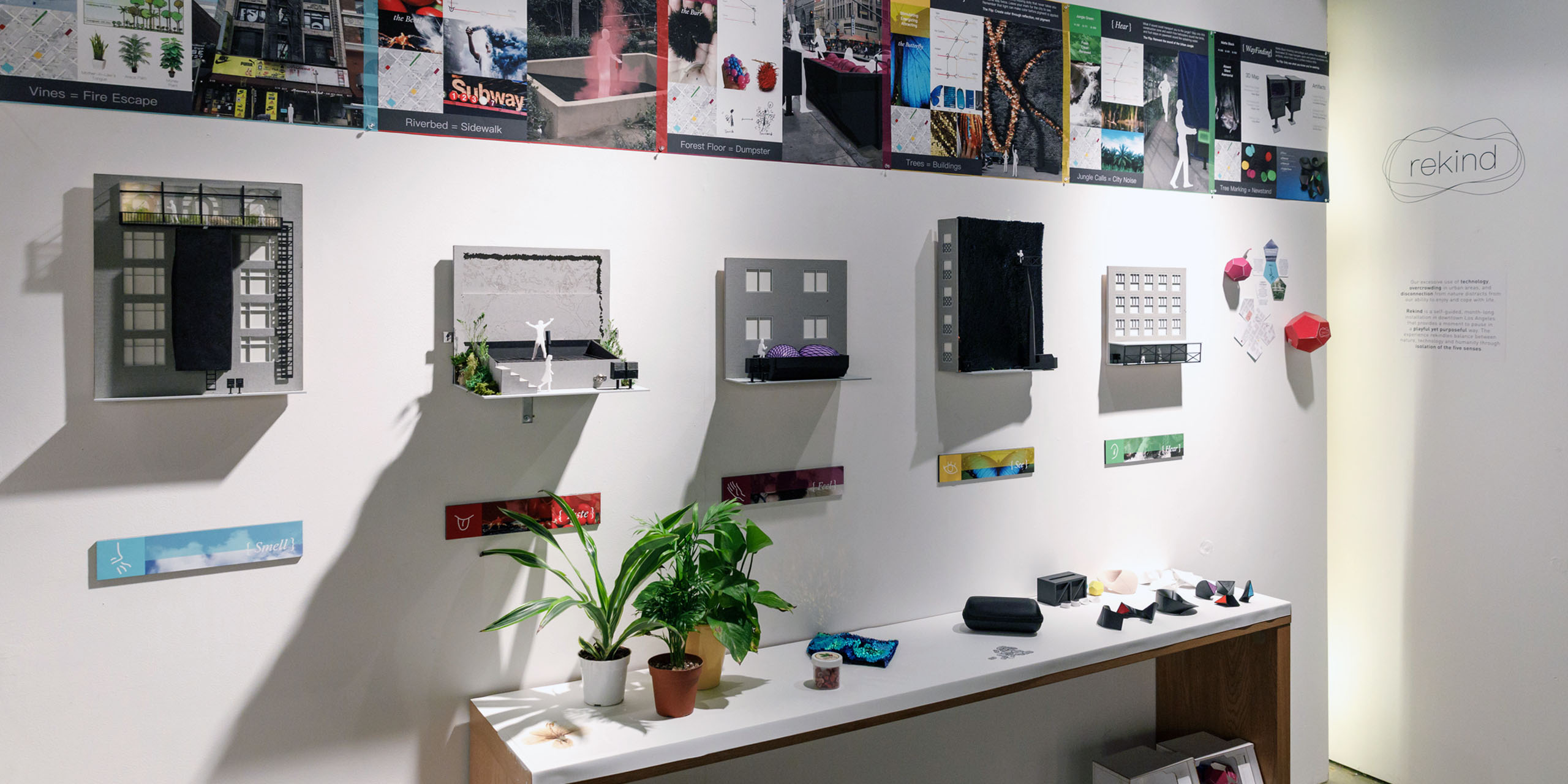
“It was important that the students make a bond with each other – American students, Japanese students. Of course, there is a difference of culture and they needed to understand each other and make a team and [establish] a bond with each other. I call that the ‘human skill:’ learning collaboration, leadership and team work. This is a good skill for the future but it can be difficult [to master.]”
– Professor Tatsuya Wada, Tama University
About Biomimicry
Biomimicry is the practice of gathering inspiration and imitating the models, systems and elements of nature to solve complex human problems. Drawing upon principles found in the natural world, biomimicry designers tap into nature – and its ecosystem strategies for interconnected and sustainable solutions – to inform human concepts and man-made creations. Biomimicry encourages investigation and identification of nature-related functions, discovering natural models and biological strategies, creating bio-inspired ideas and evaluating using life principles.
Research and Project Development
The studio began with ArtCenter and Tama students as well as faculty traveling to Costa Rica where they would engage in a two-week research expedition. Students and faculty settled in their new temporary home on Costa Rica’s Central Pacific coast, an ecological transition zone sandwiched between tropical dry forests and the humid rainforests.
The students’ time in Costa Rica focused on research, exploration and analysis. Throughout their stay, students embarked on numerous field trips and guided tours to examine up-close design elements found in nature, the balance within ecosystems and the sustainability of plants and animals. Through biomimicry-based exercises, photo-documentation and keeping a field journal, students observed the efficiency and adaptability of nature. Inspired by the Grinnell Journaling Method of field observation, the journals were important tools for the students to sketch, diagram and contemplate their experiences which would help them remember specific moments and act as a catalyst for future ideation. While journaling was a highly personal experience, many students shared and discussed ideas and observations in their journals with each other.
Students engaged in daily excursions, participating in nature walks, horseback rides, rain forest night hiking and jungle camping, along with assisting biologists with sea turtle migration. Studio time was equally important as ways for students to process and incorporate the lessons of nature into their design thinking. Lessons on local flora and fauna offered insights into the intelligence of nature to provide shelter, food and more to a diverse cross-section of needs.
Students were introduced to the Six Life Principles which guide life to survive and thrive.
- Adapt to Changing Conditions
- Be Locally Attuned and Responsive
- Use Life-Friendly Chemistry
- Be Resource Efficient
- Integrate Development with Growth
- Evolve to Survive
The Six Life Principles gave students a richer understanding of the interconnection and adaption of the nature world – and how those principles can be used in designing human structure, items and systems.
Student teams worked together on a research presentation, sharing insights, field trip findings and research workbooks. Through initial sketches, mock-ups and conceptual art, they created a multi-dimensional presentation describing how nature protects, communicates and engages in symbiotic relationships. As they identified the natural systems that expounded on those concepts, students began to imagine how those systems could translate into human designs, products, fabrication, spaces and methodology.
Returning to California
Arriving in Pasadena, ArtCenter and Tama students began an extensive period of ideation and collaboration with their international classmates using the principles of biomimicry and other nature-based design elements they encountered in Costa Rica.
Each team conceptualized a project that would encourage a human connection to ecology in a private, public or alternative space. Students would develop and define sustainable materials and fabrication methods and incorporate products that would inspire healthy lifestyles or revitalize a relationship with nature.
Student teams also worked on a digital presentation that would integrate audio, photography, video, diagrams and sketches to communicate their full-formed concepts. Additionally, teams would craft a 3-D model as well as any other large poster/print work needed for the final presentation.
While student teams were ideating and refining their projects, they also engaged in a local field trip to Griffith Park, one of the largest urban parks in America, which tapped into the eco-observation skills they learned in Costa Rica.
Method of research:
Mid-term presentations provided student teams with insights, suggestions and feedback that deepened their understanding of project direction and refinement. Students continued to work on their final models, digital presentation and rehearse their verbal presentations.
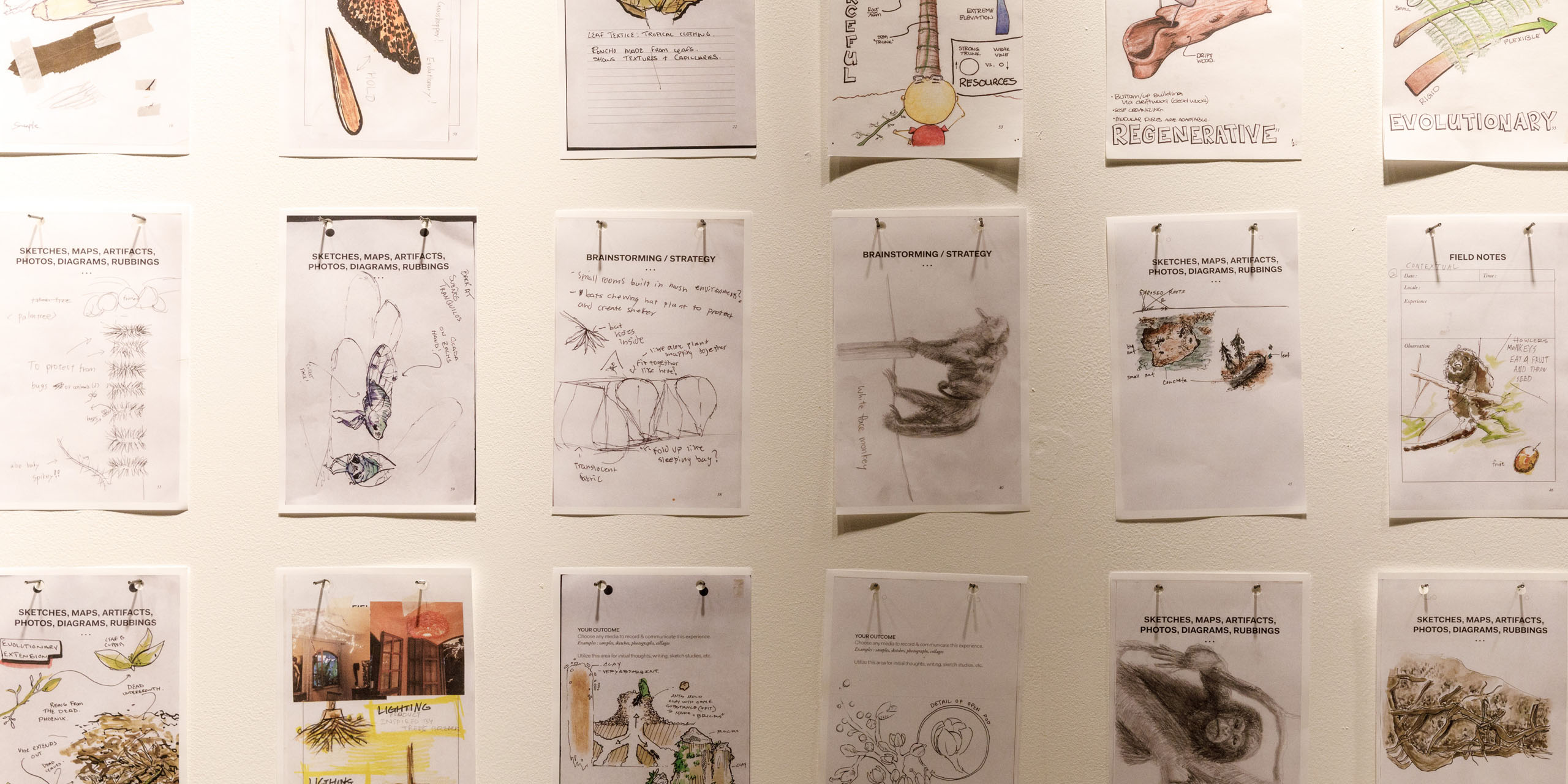
“I am very research heavy. So the idea of getting out of my comfort zone and being fully immersed in an environment where I am surrounded by the things that I am researching was really appealing. Also, the prospect of working with biologists and seeing things through their lens was also really exciting. We are so comfortable seeing things through a designers’ lens and a student lens, but we never stop to think about things from a scientists’ perspective.”
– Alynn Tergovorkian, Student, Environmental Design
Project Outcomes
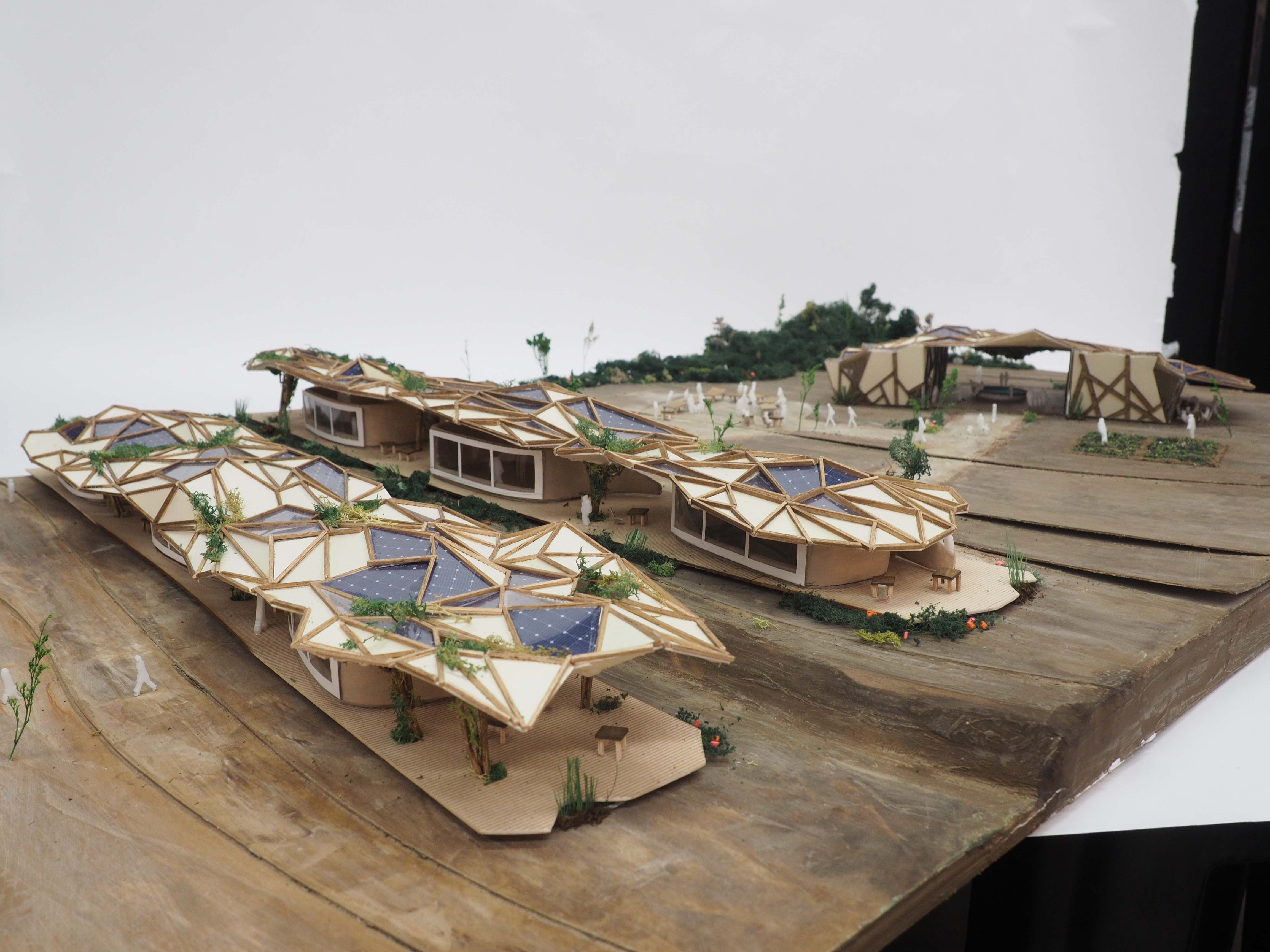 close
close
Civitas Nicoya
Read moreKumpei Nkatake, Kairi Nishimura, Alynn Tergovorkian
To be built in an area recovering from deforestation, this sustainable ecological lodge welcomes visitors of all ages and families to stay overnight and enjoy the natural beauty as they work hand-in-hand with resident biologists to learn about the native plant and animal life. Guests can go on excursions, take workshops and meet locals who will set up farmer’s markets and sell handcrafted goods onsite. The lodge’s lobby and cabinas are built using an earth bag technology that employs cocoa mulch and soil filled inside used burlap coffee bags shaped into interlocking ‘bricks.’ Created to decay back into the ground, the structures – sans supporting roofs, eco-filtration systems and solar paneling – will slowly decompose at the same rate the surrounding landscape will regain its active plant and animal life. As nature reclaims the area, the lobby and cabinas will move to other nearby deforested areas.
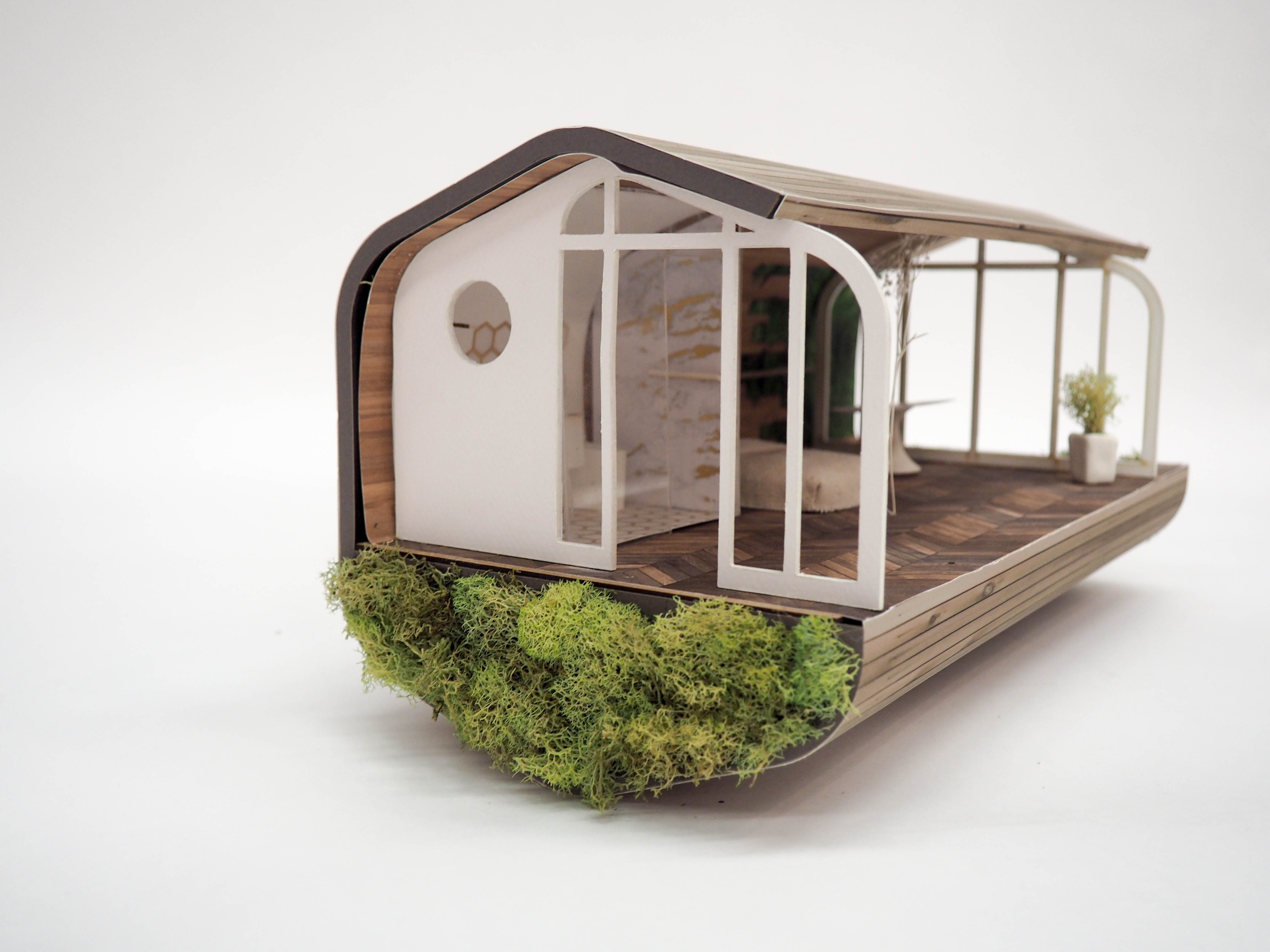 close
close
Casa Ikiru
Read moreAdriana Avendano, Osamu Hataoka, Alejandro Jimenez, Mikako Shirai
A communal living complex, this modular system of honeycombed-shaped pods surround open natural green spaces and are located above public retail shops, conceptualized to be constructed in Pershing Square in downtown Los Angeles. Designed for maximum efficiency and to minimize materiality, these pre-fabricated private residences – single, double or family-sized – are customizable, environmentally-friendly, affordable and sustainable. Each resident must agree to contribute to the communal living arrangement through various activities and events. Carpooling, bike riding and public transportation will be promoted. The complex features a children’s play area, art galleries and gardens with lush, non-invasive plants, trees and shrubs. Gray water is collected from the units and used to water the garden plants. The public ground level of the complex will house retail shops and services such as eco-friendly boutiques, cruelty-free restaurants, yoga classes and other sustainable services.
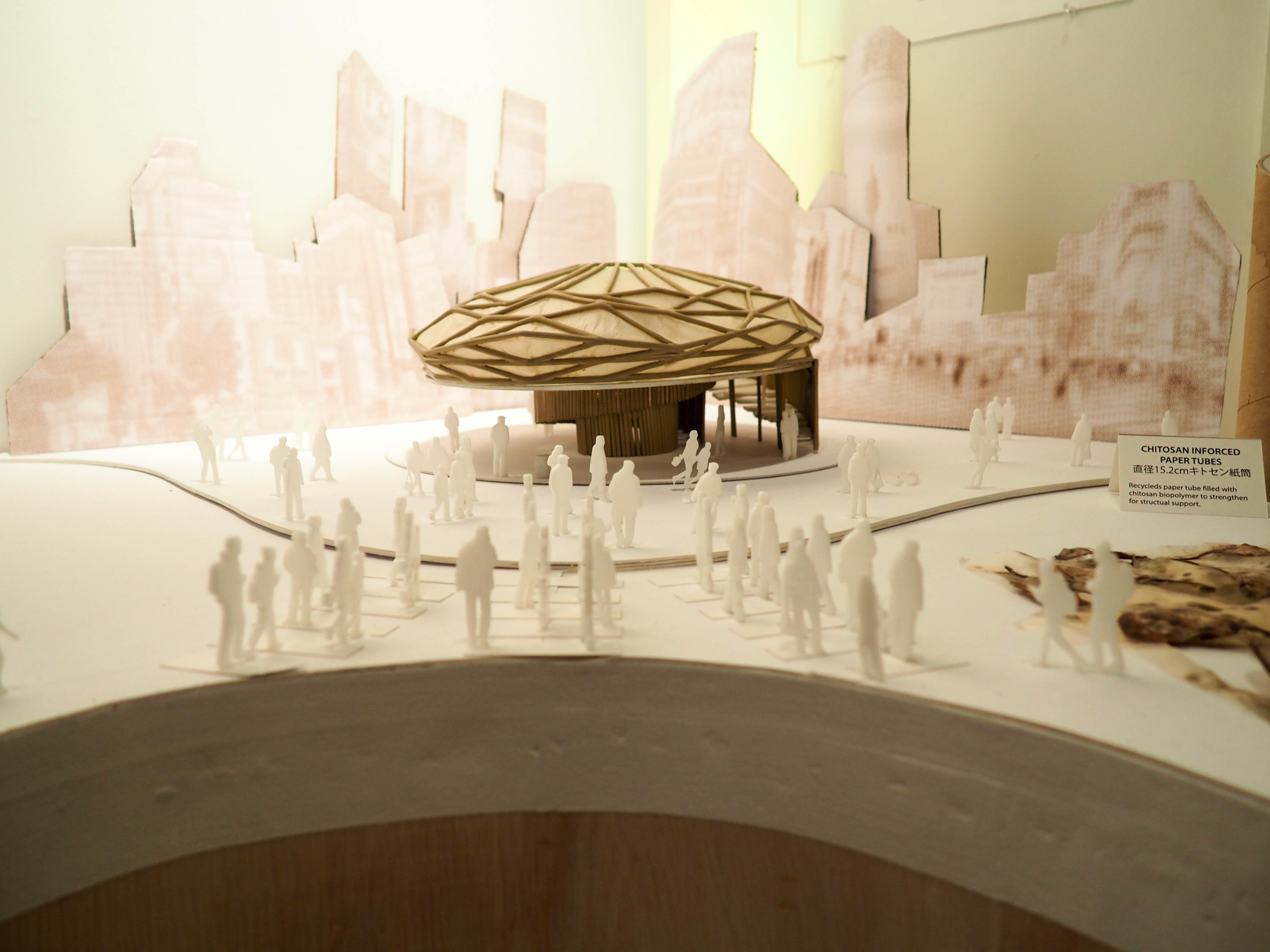 close
close
Shin Pura Vida
Read moreBren Carillo, Naz Mohseni, Kyo Suzuki
This sensorial experimental pop-up will be placed in crowded urban areas, targeted at the Shibuya intersection in Tokyo known as the world’s busiest pedestrian crossing. Visitors will enter the structure – an exploded axon shape – and ascend rounded staircases to be immersed in four sensory experiences for a brief connection to nature. Sound tiles in the first location will absorb and quiet the outside noise; a sunset simulation will relax with warm colors; touching leaves will change their colors; and tiles infused with natural earth smells will scent the final experience. Before leaving the structure, visitors will enter a retail space which will sell products reminiscent of their sensorial interactions: fair trade coffee scrubs, oil diffusers, organic chocolate, etc. In addition to solar lighting, the pop-up is built out of biodegradable materials, such as cellulose and paper tubing, which will ultimately decompose.
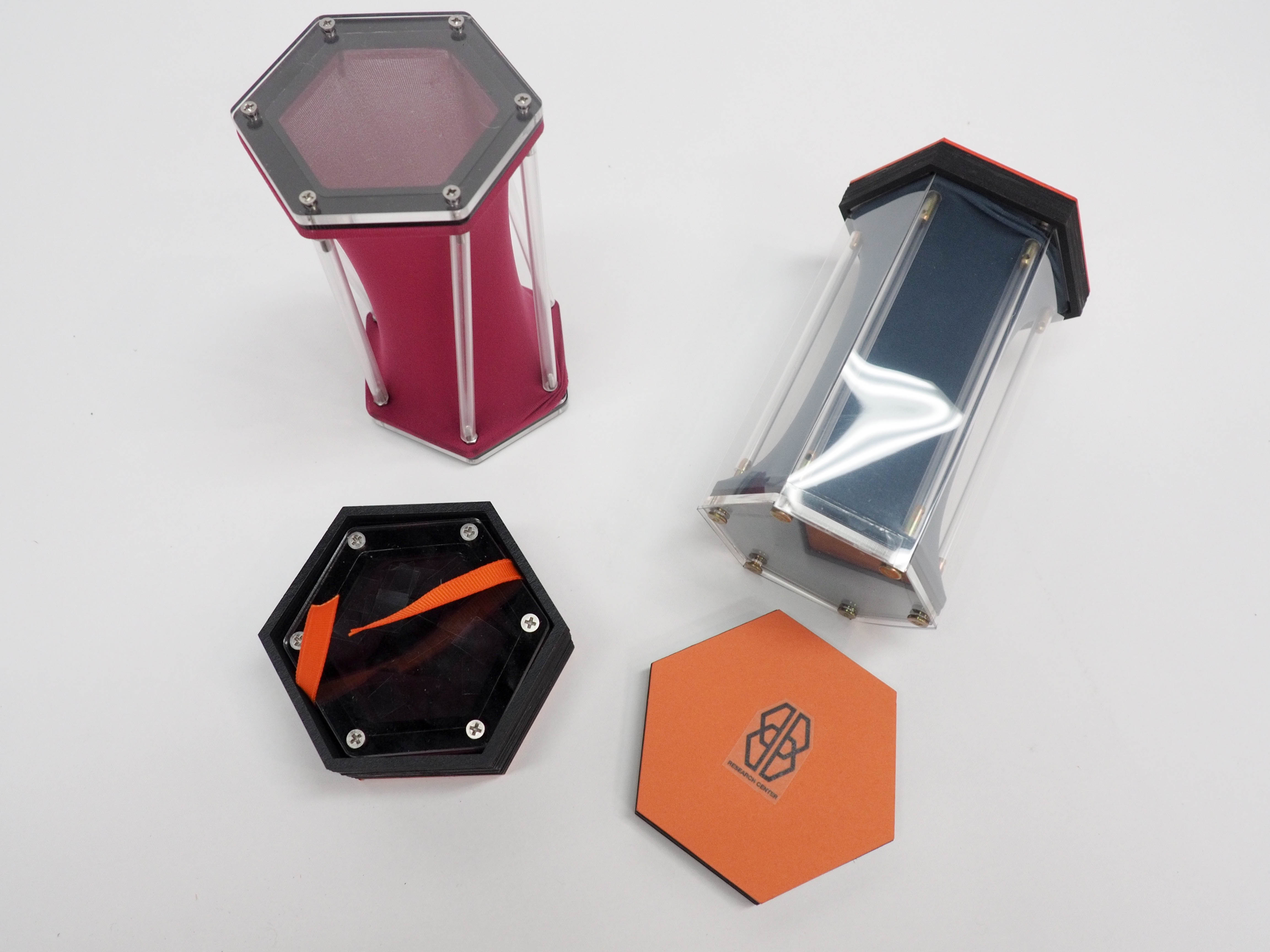 close
close
Kinkoh Research Center
Read moreZack Eisenberg, Max Galassi, Motoko Sato, Fumi Takata
This ecological research center, highlighting the role of butterflies and honeybees, will welcome guests, especially families to connect, educate and be a catalyst for change for two of nature’s more important pollinators. To be constructed in the hills outside of Southern California’s Ojai community, this center will be designed low to the ground to give the impression that it is part of the surrounding green landscape. The building will be divided into two themed interaction areas that will feature the importance of bees and butterflies through hands-on exhibits, family-friendly experiences and actual pollinator displays. Children will enjoy jumping on the hexagonal-shaped floor, climbing on flower chairs, playing with hexagonal wooden toys and looking through kaleidoscopes. An outside deck leads guests to an observation point overlooking a butterfly garden and eucalyptus trees where migrating monarchs could overwinter.
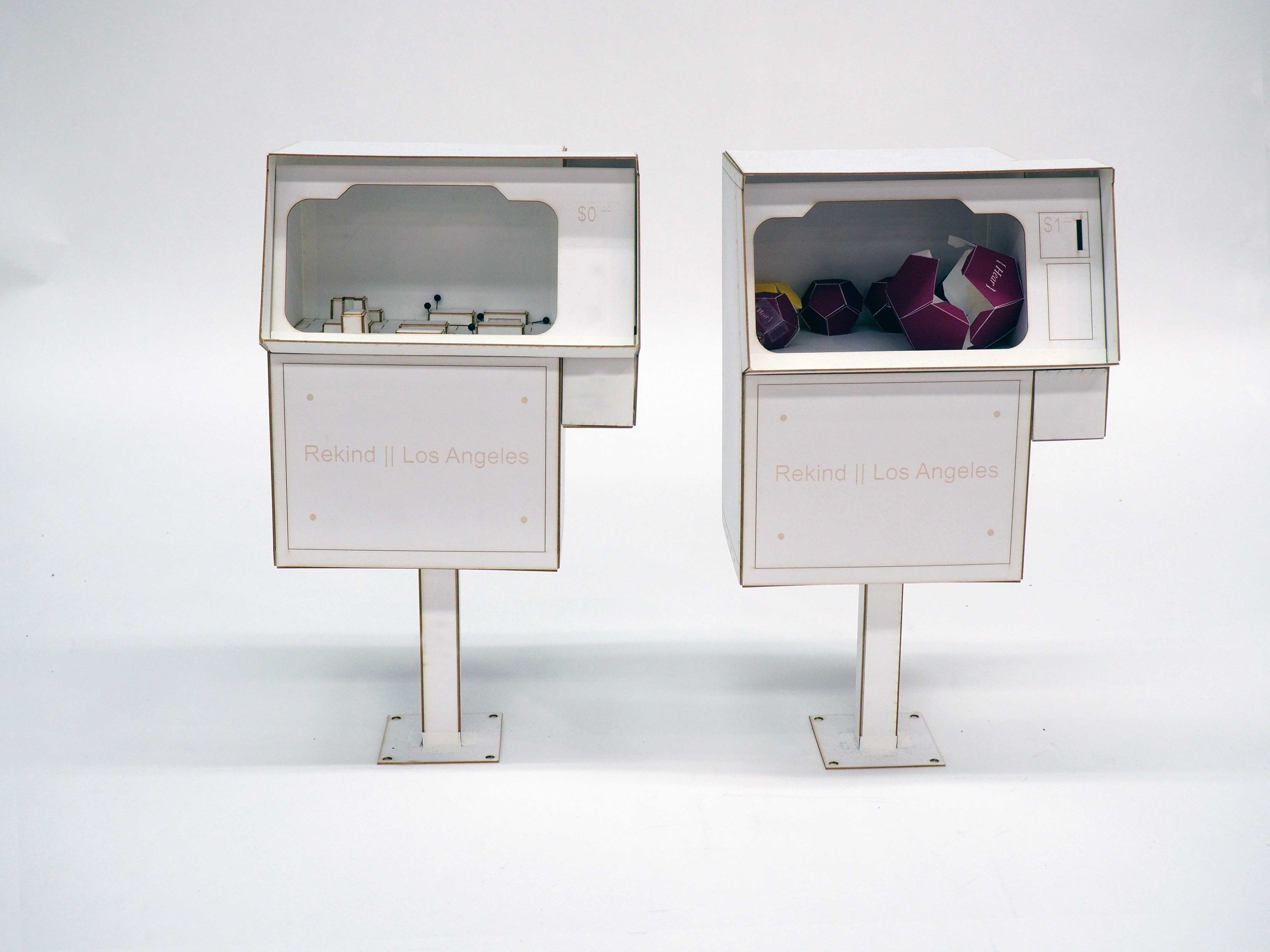 close
close
Rekind
Read moreYoshikura Fumika, Charlie Hodges, Margaux Mayer
This series of five self-guided installations in a crowded metropolitan locations offer sensorial experiences to facilitate a harmonious state for visitors seeking to escape the urban ‘jungle.’ The installations, designed for downtown Los Angeles, will first appear at the popular L.A. Art Week. Appealing to all ages, the experiences can be accessed at any time. Old newspaper vending machines will contain instructions and artifacts connected to each experience. By collecting all five puzzle pieces, visitors can create a keepsake 3-D Mobius strip infinity symbol. The installations include: (Smell) climbing an abandoned fire escape lined with plants where the top level, filled with plants, contains clean air; (Taste) standing on a sidewalk grate where a vaporized berry scent envelopes guests; (Feel) jumping into a dumpster filled with large bubble toys, (See) from a hydraulic crane, manipulating oval iridescent sequins on a large parking lot exterior wall, and (Hear) walking near a construction zone under a covered sidewalk, the sounds of the jungle – water drops, bird sounds, etc. – will replace the outside urban cacophony
 close
close
Flowlet
Read moreJilian Bak, Teru Kinoshita, Su Kyung, Kumpei Nkatake
Inspired by Los Angeles’ parklet system of using a small portion of a traffic lane for a mini-experience, this small park will actually filter urban rainfall into clean water, demonstrating how humans can counter the effects of pollution. Conceived to be constructed in L.A.’s Financial District, this parklet will add green to the concrete environment and encourage active participation in the filtration process. Moving the collected water through the system, pedestrians will actively engage with an Archimedes Screw, step onto a hydraulic floor and observe the filtration process that uses soil, fungi, plant roots and moss filter to create clean drinking water. Filtered water here will be returned to restore the local ground water tables.


